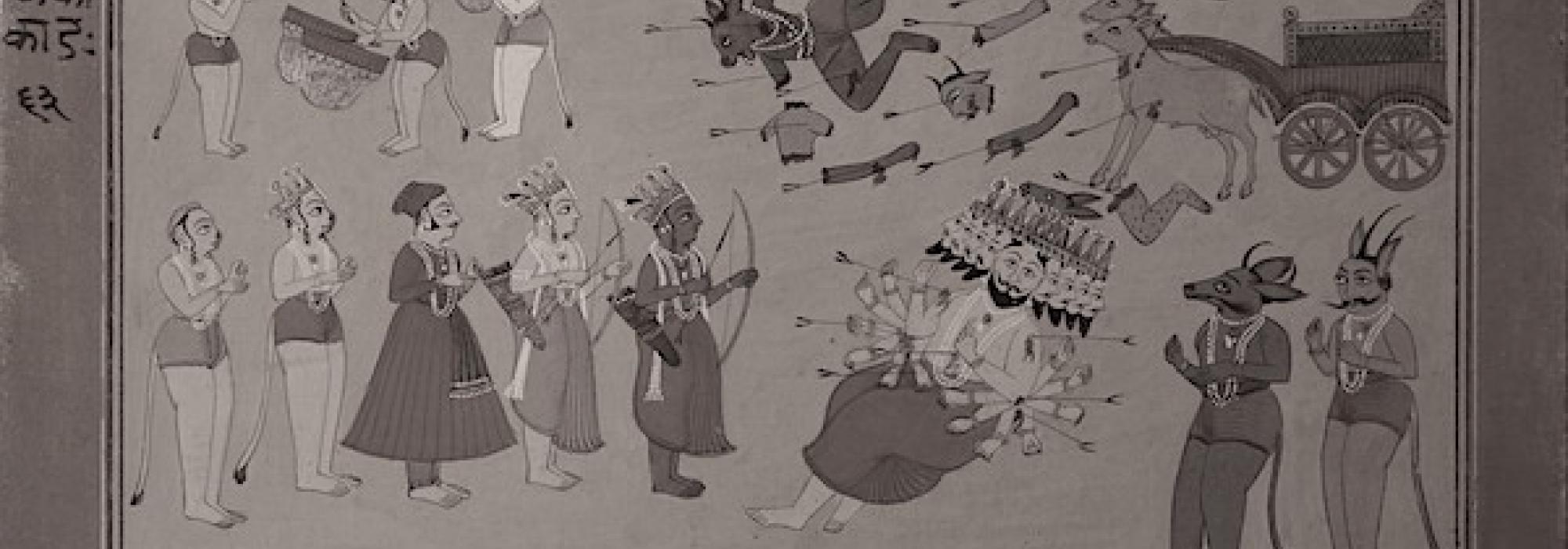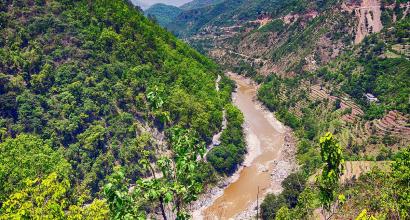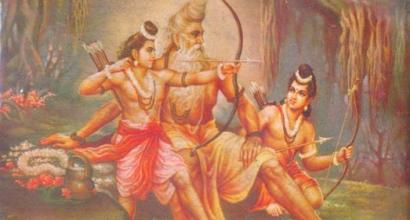Even in the matter of understanding the meaning of words, one must keep the vision of the poet in mind first and then apply the sentence accordingly. The feats of cleverness in exposition and commentary that forgets this poetic vision will contribute to the destruction of Rasa. In his enthusiasm to narrate a story, the poet will pour words and sentences in a heap. He does not have the time or tenacity to carefully weigh the usage possibilities of each word. If he takes a break, the creative passion and heat would perhaps go cold. In the work of composing poetry, the aspect of speed is not only inevitable but desirable. In the force of its flow, we don’t really need to rip apart each letter and examine it separately. This is the drawback and failing that we notice in several commentators. Excessive cleverness leads to the loss of savouring Rasa. A commentary must enhance our enjoyment of Rasa and not destroy it. The logician must not assault the poet.
Srimad Ramayana is not mere poetry—it is the First Poem. Its primacy is not just in the realm of time but has been established in the realm of quality as well. In the literary history of the world, it is truly an astonishing feat. The first ever poetry available to the world also contains the features of what defines and constitutes good poetry. In the history of the firsts in this world, we notice a certain refinement between the very first work and later works. In the early works, we observe a kind of rawness and vulgarity. In the later works, we notice gentleness, refinement and class. The skill and acumen of the author becomes better with each day. We notice this in the history of English literature. One can compare the writing style of Johnson’s period (1649-1703) with that of Somerset Maugham who passed away recently. We can also compare the folk songs written in the days prior to Robert Burns with the poems of Tennyson. In both cases, we notice a sort of refinement process known as evolution. Has this occurred in the case of Sanskrit as well? If the early works been raw and had gradually been refined with the passage of time, it would have been imbued with betterment. However, in the case of Sanskrit, did the very first (poetic) creation become its absolute best? In this case, there is a special circumstance which we must carefully observe.
The work that folk literature accomplished in other languages was accomplished by the Vedic corpus in Sanskrit. In English, people gifted with the skill of language composed songs, wove folk poetry and added idioms to it and tamed language. The litterateurs who came later took this raw material made available in this manner and continued their work of refining it. however, in the case of Sanskrit, the task of taming language had already been accomplished by our Rishis. They had also accomplished the work of refining and purifying the mind and intellect of the common people. Poetic metres such as the Vedic Anushtup, Trishtup and others were readily available to Valmiki. Dasharatha’s court comprised nobles and musicians. Indeed, we have abundant praise of professional women in the Rishyashrunga episode! Weren’t they musicians? This shows that there were lyrical compositions (set to music) in such an ancient time. All of these became raw material for Valmiki. Likewise, a highly cultured society was already prepared to welcome and adore Valmiki’s poetry. An integrative poetry is that literary work which was not written prior to the current period but whose writing was pending. Narrative ballads in the form of musicals, proverbs and idioms, wise sayings, or chunks of independent verses must have existed prior to Valmiki’s time. A complete work of poetry (like the Ramayana) did not exist in that period. Thus, the first and original credit for composing an all-encompassing and self-complete, standalone work of poetry beautiful in all aspects using the readily available linguistic material goes to Maharshi Valmiki.
Isn’t Veda Poetry?
The various characteristic features of poetry are abundantly available in the Veda. Phrases that please the mind, style of articulating descriptions, metrical felicity, and above all, the music of compassionate longing that resides in the human heart—one can say that no other poetry contains all these in the manner in which it is expressed in the Samhita portions of the Veda. Despite this, Veda cannot be called poetry. Because the human being occupies the central place in poetry. The central place in the Veda is occupied by the Devatas. That secret spirit and consciousness that governs, directs and protects the entire cosmos – whose twin strength of punishment and blessing makes human life possible or extinguishes it – the Ishwara form of that all-encompassing Spirit is the hero of the Veda. In the Veda, the human is just a subject-being who has surrendered to that Spirit. “O Indra, please give me rain and harvest; O Agni, protect my family; O Varuna, please forgive my sins; O Rudra, please don’t be angry with me, but show your anger on my enemies.” A human being is one who begs in this fashion. In the duration of begging in this fashion, he describes and paints the miracles and powers of these Devatas in different ways. Thus, in the Veda, the hopes and anxieties of the human are merely instrumental; the aim is to obtain fruits [Prasada] from the Almighty. The Devata is important in the Veda; the human is just incidental. However, in poetry, the human is important and the Devata is incidental. In this way, Veda and Poetry are complementary to each other.
itihAsa purANAbhyAM vEdaM samupabriMhayEt |
bhibhEdyalpa shrutA dvEdO mAyayaM pratarEditi ||
(Mahabharata: Adiparva: 1-273)
The Vedas should be analysed and understood with the help of Itihasa and Purana. It seems that the Veda gets frightened that someone who doesn’t have the poetic experience will beat it! This means the person who wishes to accurately and comprehensively understand the Veda must necessarily earn the knowledge of the world. The method and path to gain worldly experience and worldly knowledge is good poetry. To the person who understands the secrets of life in this mortal world through an honest study of Srimad Ramayana, the meaning of the Veda will be easily available to him.
To be continued
















































